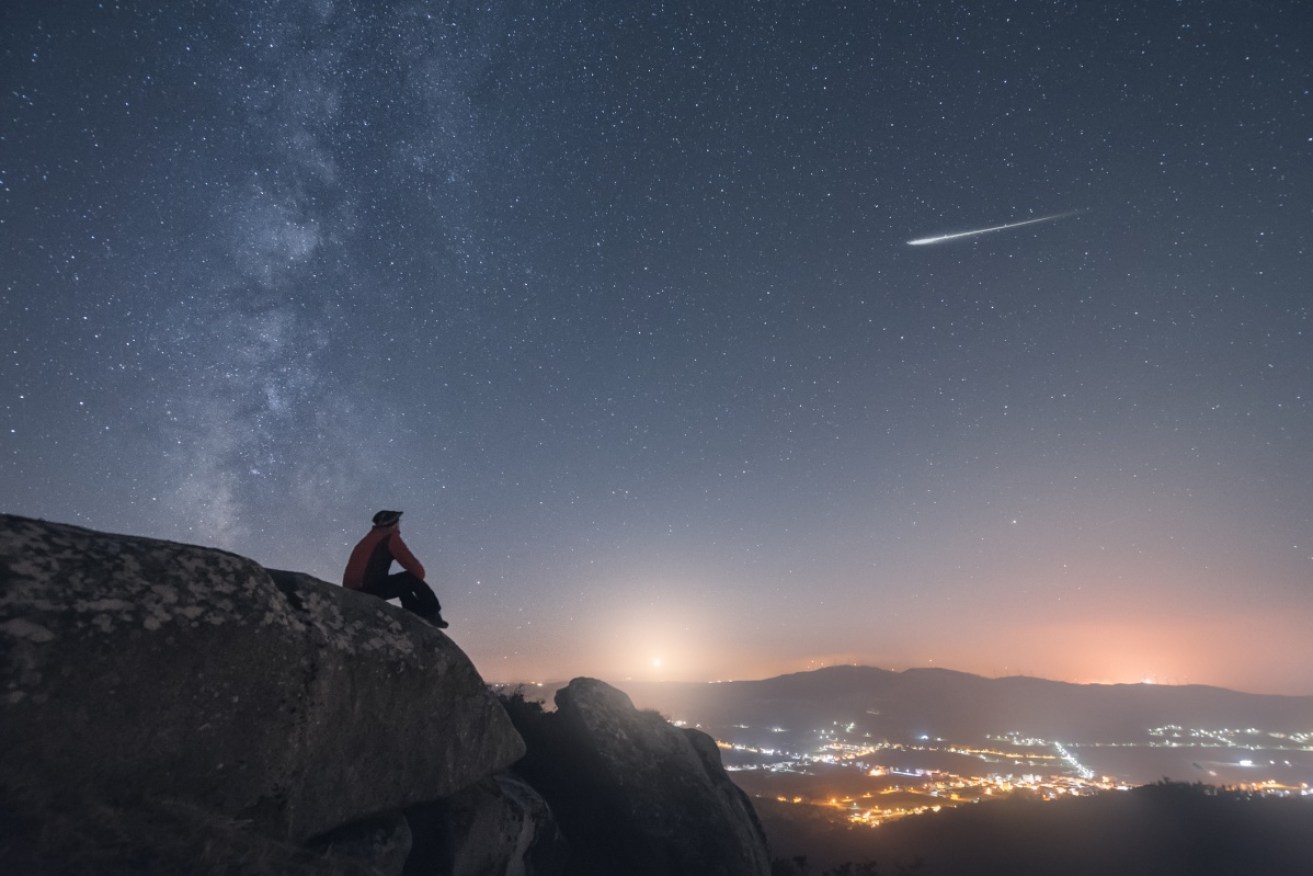It came from outer space: Australians have a box seat for spectacular meteor shower


The show will peak between 2am and 5am on Monday morning, May 7. Photo: Getty
Forget the binoculars and telescopes. All you need is a deckchair, a dark spot and a clear view of the north-eastern sky.
There’ll you take in a free-wheeling fireworks display that’s been slowly going off since late April – and climaxes early Monday morning, May 7.
It’s known as the annual Eta Aquariid meteor shower – because the shooting stars all appear to come from within the Aquarius constellation.
The show will peak at up to one sparkler a minute between 2am and 5am Monday morning. On that basis, even at its most hectic, it’s a slow-burn thrill, but one worth getting up early for.
What you’re actually seeing are pieces of Halley’s Comet, probably the most famous comet in human history. The actual comet last appeared as a blue blur in 1986 and won’t return until about 2061.
The Earth passes through the debris that’s left behind when Halley’s Comet approaches the sun and some of its ice melts away – along with many tiny fragments of dust.
The Eta Aquariid is a world-wide event, but the southern hemisphere has the best view. And even with a waning gibbous moon running interference, astronomers are hoping for a good show.
Clare Kenyon is the Laby Teaching and Outreach Fellow in the University of Melbourne’s Astrophysics group. She says the shower first appears about 2am, but low on the horizon.
“It starts out in the east. By four or five o’clock in the morning, the shower will be well above the horizon, and coming from the north-eastern part of the sky,” she says.
For the best view, Ms Kenyon advises: “Lie on your back or on a reclined chair and just look at the sky. You don’t just want to stare at the centre of the radiant (the point in Aquarius where the shooting stars originate) otherwise you’ll miss those outside that area. Try leaving it as late as possible, for when it’s at its highest point before dawn comes.”
She also advises driving half an hour out of town if you’re keen to make a project of it, as the absence of city lights will make for a better show.

Halley’s Comet, from 1986, won’t reappear until at least 2061. Photo: Getty
Dr Andy Tomkins is associate professor at Monash University’s School of Earth Atmosphere & Environment. He says these meteors aren’t the sort that will crash to earth with a sonic boom. Rather they come into the atmosphere about the size of a grain of sand.
“But they’re travelling at 20 kilometres a second and just burn up straight away,” he says.
Even though they’re tiny, the speed at which they hit oxygen causes a spectacular explosion in the form of a shooting star.
“You can see a shooting star just about every night of the week if you go looking,” he says. “With this, you get to see a whole bunch of them. I think they’re nice to look at.”
Dr Tomkins had called The New Daily from the Flinders Ranges in South Australia. He and an honours student were looking for micro-meteorites – a quarter of a millimetre at most. And presumably much bigger when they first lit up the sky.
The Earth actually crosses the orbital path of Halley’s Comet twice a year, the second time in mid-October. This gives birth to what’s known as the Orionid meteor shower, because they appear to radiate from the Orion (the Hunter) constellation.








